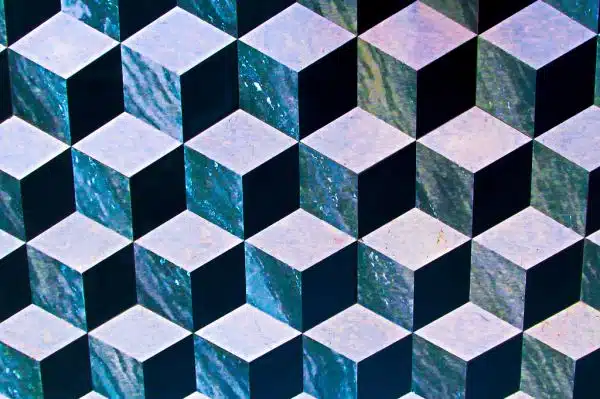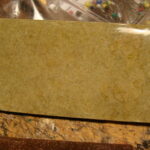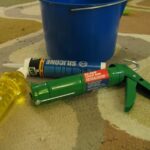Marble floors are a beautiful addition to any home or business space. They offer elegance and sophistication and can transform the look and feel of a room instantly. However, with great beauty comes great responsibility, as marble requires special care and attention to maintain its shine and beauty.
As a marble floor cleaning expert, I have seen numerous cases where homeowners or businesses have attempted to clean their marble floors with improper methods, resulting in damage or discoloration. In this article, I will provide you with valuable tips and tricks on how to properly clean your marble floors without causing any harm. With our guidance, you can keep your marble floors looking pristine for years to come while avoiding potential costly repairs.
Preparing Your Marble Floors For Cleaning
To effectively clean your marble floors, it’s important to first prepare your tools and take necessary safety measures. Begin by gathering all the necessary equipment, including a soft-bristled broom or vacuum with a hard floor setting, a mop, distilled water, and a pH-neutral cleaner specifically designed for marble floors. Avoid using abrasive cleaning tools such as scrub brushes or steel wool as these can scratch and damage the surface of your marble.
Before you begin cleaning, remove any loose debris from the surface of your floors with a broom or vacuum. Make sure to use the hard floor setting on your vacuum to avoid scratching the marble. Once you’ve cleared away debris, you’re ready to start mopping. Fill a bucket with distilled water and add in the recommended amount of pH-neutral cleaner for your size of bucket.
When handling cleaning solutions and equipment, it’s important to wear gloves and protective eyewear to avoid any potential harm from splashes or fumes. Additionally, be careful not to over-saturate your floors while mopping as this can cause water damage or discoloration. By taking proper precautions and preparing your tools beforehand, you’ll be able to safely and effectively clean your marble floors without causing any damage. Now that you’re prepared, let’s move on to understanding the type of marble you have.
Understanding The Type Of Marble You Have
Preparing your marble floors for cleaning is an essential step in maintaining their durability and beauty. However, before you begin the cleaning process, it’s crucial to understand the type of marble you have to avoid damaging it. Identifying marble types may seem daunting, but with a keen eye, you can recognize them easily.
Understanding marble characteristics is also vital when cleaning your floor. Marble is a delicate natural stone that requires specific care and attention. Some marble types are more porous than others, making them susceptible to stains and etching from acidic substances like lemon juice or vinegar. Therefore, it’s crucial to choose the right cleaning products and tools suitable for your marble type.
To give your marble floor a thorough clean, here are some tips:
- Sweep or vacuum the floor regularly to remove dirt and debris.
- Use warm water and a pH-neutral cleaner specifically designed for marble surfaces.
- Avoid harsh chemicals or abrasive cleaners that may scratch or damage the surface.
- Dry the surface thoroughly with a clean towel or mop after cleaning.
Identifying your marble type and understanding its characteristics will help you choose the right cleaning products for optimal results without causing damage. In the next section, we will discuss how to choose the right cleaning products suitable for different types of marble floors.
Choosing The Right Cleaning Products
When it comes to cleaning marble floors, choosing the right cleaning products is crucial. Not only do you want a product that effectively removes dirt and stains, but you also want one that won’t damage or etch your beautiful marble surfaces. One option to consider is eco-friendly cleaning products, which are becoming increasingly popular in the market. These products are made using natural and organic ingredients that are safe for both the environment and your marble floors.
Another factor to keep in mind when choosing cleaning products for your marble floors is cost-effectiveness. While there are many high-end products available on the market, they can often come with a hefty price tag. However, there are also plenty of more affordable options that can still get the job done effectively. For example, vinegar mixed with warm water can be an effective and inexpensive way to clean your marble floors without causing any damage.
In summary, choosing the right cleaning products for your marble floors involves considering factors such as eco-friendliness and cost-effectiveness. By selecting products made with natural ingredients or opting for more affordable options like vinegar solutions, you can achieve a clean and polished look for your marble surfaces while minimizing harm to both your home and the environment. In the next section, we will explore how to avoid harsh chemicals when cleaning your marble floors in order to protect them from unnecessary damage over time.
Avoiding Harsh Chemicals
Cleaning your marble floors shouldn’t be a daunting task. However, it’s important to avoid using harsh chemicals that may damage the surface of your beautiful flooring. There are eco-friendly alternatives that can effectively clean your marble floors without compromising their quality and shine.
One option is to use homemade cleaning solutions made from natural ingredients such as vinegar, lemon juice, and baking soda. These solutions can be mixed with warm water and applied to the floor using a soft mop or cloth. The acidic properties of vinegar and lemon juice can break down dirt and grime without causing any damage to your marble floors.
Another alternative is to use specialized eco-friendly cleaning products that are specifically designed for marble surfaces. These products are formulated with natural ingredients that are gentle on your floors while still being effective at removing dirt and stains. Look for products labeled as ph-neutral cleaners as they won’t damage the surface of your marble flooring.
By avoiding harsh chemicals and instead opting for eco-friendly alternatives or specialized cleaning products, you’ll be able to keep your marble floors looking pristine without causing any harm to the environment or to yourself. In the next section, we will discuss in more detail how using ph-neutral cleaners can help maintain the quality of your marble flooring.
Using Ph-Neutral Cleaners
- Identifying the correct pH-neutral cleaner for a marble floor is crucial for effective cleaning and preserving the stone’s finish.
- Many pH-neutral cleaners are available on the market and can be used to achieve a safe and efficient clean.
- The benefits of using pH-neutral cleaners on marble floors include a decrease in the amount of dirt and grime buildup, as well as increased protection against staining and etching due to acidic materials.
- Utilizing pH-neutral cleaners on marble floors also helps to maintain the natural beauty and luster of the stone over time.
Finding The Right Ph-Neutral Cleaner
Marble floors are a beautiful addition to any home, but they require careful maintenance to retain their luster. One of the most important aspects of cleaning marble floors is choosing an appropriate pH-neutral cleaner. This is because acidic or alkaline cleaners can damage the surface of the marble, leaving it dull and etched.
When choosing a pH-neutral cleaner for your marble floors, it’s essential to consider the manufacturer’s instructions and recommendations. Look for products specifically formulated for use on marble surfaces, and avoid those that contain harsh chemicals or abrasives. Additionally, be sure to test any new cleaner on a small, inconspicuous area of your floor before using it on the entire surface.
Maintaining a consistent cleaning schedule is also crucial when it comes to caring for your marble floors. Regular sweeping and/or vacuuming will help remove dirt and debris that can scratch or damage the surface over time. When using a pH-neutral cleaner, be sure to follow the recommended dilution ratio and application method for best results. With proper care and attention, your marble floors can remain beautiful for years to come.
Benefits Of Using Ph-Neutral Cleaners
As a marble floor cleaning expert, I highly recommend the use of pH-neutral cleaners for maintaining the pristine condition of your marble floors. Using pH-neutral cleaners offers a range of benefits that can help you protect and preserve the natural beauty of your flooring.
Firstly, using pH-neutral cleaners ensures that your marble floors are not exposed to harsh chemicals that can cause discoloration or etching. This is especially important when dealing with different types of marble, as some are more sensitive to acidic or alkaline cleaners than others. By choosing a pH-neutral cleaner, you can be confident that you’re using a product that won’t damage your flooring.
Secondly, pH-neutral cleaners offer effective cleaning power without the need for harsh abrasives or scrubbing. This means that you can remove dirt and grime from your floors without risking scratches or other forms of damage. Additionally, many pH-neutral cleaners are formulated to be gentle enough for daily use, making it easy to maintain a consistent cleaning schedule.
Finally, using pH-neutral cleaners is an eco-friendly choice that supports sustainability efforts. Many conventional floor cleaning products contain harmful chemicals that can pollute waterways and harm wildlife. By choosing a pH-neutral cleaner, you can do your part in protecting the environment while also keeping your floors clean and beautiful.
In conclusion, choosing the right cleaner is essential to maintaining the natural beauty and luster of your marble floors. By opting for a pH-neutral cleaner specifically formulated for use on marble surfaces, you can ensure effective cleaning power without risking damage or discoloration. With regular care and attention using pH-neutral cleaners, your marble floors will continue to shine bright for years to come while supporting sustainability efforts in our world today.
Diluting Cleaning Solutions
As we have discussed earlier, pH-neutral cleaners are the best choice when it comes to cleaning marble floors. However, it’s not just about using the right cleaner; you also need to use the correct mixing ratio. Mixing ratios refer to the amount of water and cleaning solution that you should use to get the best results.
A common mistake that people make is using too much cleaner or not diluting it enough. This can lead to streaks, discoloration, and even damage to your marble floor. The general rule of thumb is to mix one part cleaner with three parts water. However, this can vary depending on the brand of cleaner you’re using. Be sure to read the instructions carefully before mixing.
Another common mistake is using abrasive tools like steel wool or scrub brushes with hard bristles. These tools can scratch and damage your marble floor, leaving permanent marks. Instead, use soft, non-abrasive tools like microfiber cloths or mop heads. These will gently clean your marble floor without causing any harm. Remember, taking care of your marble floor requires a gentle touch and attention to detail.
Transition: Now that we’ve discussed mixing ratios and common mistakes, let’s talk about another critical aspect of cleaning marble floors – using soft, non-abrasive tools.
Using Soft, Non-Abrasive Tools
To properly clean marble floors, it is imperative to use gentle tools that will not damage the surface. Soft bristled brushes are an excellent choice for cleaning grime and dirt from marble floors. These brushes are efficient at removing debris without leaving any scratches or marks on the marble surface. When using soft bristled brushes, be sure to apply gentle pressure when scrubbing to avoid damaging the floor.
Another effective tool for cleaning marble floors is microfiber cloths. Microfiber cloths are known for their ability to trap dirt particles effectively. They are also soft and non-abrasive, making them a perfect tool for cleaning delicate surfaces like marble flooring. When using microfiber cloths, work in small sections of the floor at a time, ensuring that you thoroughly clean each area before moving on to the next.
To further enhance the effectiveness of soft bristled brushes and microfiber cloths when cleaning marble floors, consider implementing these tips:
- Always sweep or vacuum your floor before cleaning it.
- Use warm water mixed with mild soap to clean your floor.
- Avoid acidic cleaners as they can damage the surface of your marble floor.
- Rinse your brush or cloth frequently while cleaning to remove any dirt or debris.
By following these tips and using gentle tools like soft bristled brushes and microfiber cloths, you can effectively clean your marble floor without causing any damage or scratches on its surface. In the next section, we will discuss ways to avoid scratches and scuffs while maintaining the beauty of your marble floor.
Avoiding Scratches And Scuffs
Having understood the importance of using soft and non-abrasive tools for cleaning marble floors, it is equally essential to avoid scratches and scuffs during the cleaning process. Marble floors are susceptible to scratches, which can occur due to mishandling or using harsh chemicals. The best way to avoid scratches is by using a cleaning solution that is specially formulated for marble floors.
Polishing techniques can be used to maintain the shine of marble floors. Polishing helps smoothen out any rough edges on the surface, making it more resistant to scratches and stains. It also gives a glossy finish that enhances the beauty of your marble floor. However, before polishing your floor, ensure that it is thoroughly cleaned and dry.
Protective coatings such as sealants can be applied after cleaning and polishing your marble floor. These coatings help protect your floor from stains and spills that may occur in the future. However, it is crucial to choose a sealant that is specifically designed for marble floors as other types of sealants may cause discoloration or damage to your flooring.
Transition: Now that we have covered ways to polish and protect your marble floor, let us move on to discussing how to remove stains from marble floors.
Removing Stains From Marble Floors
- Removing oil stains from marble floors requires a specific cleaning solution and should be done as soon as possible to ensure the stain does not become permanent.
- Etchings on marble floors can be removed with a poultice made from baking soda and water.
- For rust stains on marble floors, it is important to first use a rust remover to break down the rust before proceeding with a marble cleaning solution.
- Marble floors should be cleaned regularly to prevent the buildup of oils that can cause staining.
- Marble floors should be resealed every few years to protect the stone and make it easier to clean.
- Proper maintenance and cleaning of marble floors is essential in order to keep them looking beautiful and stain-free.
Removing Oil Stains
To maintain the pristine appearance of marble floors, it is essential to know how to remove all types of stains from them. One of the most common and stubborn types of stains that affect marble floors is oil stains. Removing oil stains from marble floors can be a challenging task, especially if not done correctly. As a marble floor cleaning expert, I recommend using simple yet effective methods to get rid of oil stains.
To remove oil stains from marble floors, start by blotting up as much oil as possible with a clean cloth or paper towel. Then, mix some warm water with a few drops of dish soap and apply it to the stained area using a soft cloth or sponge. Allow the solution to sit for about 10 minutes, then rinse the area thoroughly with clean water and dry it with a clean towel. For tough stains, you can use poultice made from baking soda and water, which creates an absorbent paste that pulls out the stain.
Preventing future oil stains on marble floors is also crucial. Always wipe up spills immediately using a clean cloth or paper towel to prevent them from penetrating into the porous surface of the marble. Avoid using acidic or abrasive cleaners on your marble flooring as they can cause etching and dulling of its natural shine. Regularly sealing your marble floors will also help prevent future staining by creating a protective barrier against spills and dirt.
Removing oil stains from your beautiful marble floors doesn’t have to be stressful or complicated when you have the right tools and techniques at your disposal. By following these simple steps and preventive measures, you can keep your marble flooring looking pristine for years to come.
Removing Etchings
As a marble floor cleaning expert, removing stains from marble floors is one of the most common tasks that I encounter. However, there is another issue that affects the pristine appearance of marble flooring: etchings. Etchings are dull marks caused by acidic substances like lemon juice or vinegar that can eat away at the surface of the marble, resulting in a rough and dull appearance. Removing etchings requires a different approach than removing stains, but it is equally essential to maintain the beauty of your marble floors.
Preventing etchings is always better than having to deal with them later. To prevent etchings on your marble floors, avoid using acidic or abrasive cleaners and instead opt for pH-neutral cleaning solutions specifically designed for natural stone surfaces. If you spill any acidic substance on your marble floors, clean it up immediately to prevent it from penetrating into the pores of the stone. Regularly sealing your marble floors will also help prevent etching by creating a protective barrier against acidic spills.
If you already have etchings on your marble floors, repairing them will require some effort and patience. The first step is to clean the affected area thoroughly using a pH-neutral cleaner and water. Then, use a polishing powder made specifically for marble surfaces to buff out the etching carefully. You can also use a polishing pad attached to an electric drill or polisher to make this task easier and faster. If you’re unsure about how to tackle severe etchings, consult with a professional marble restoration service instead of attempting DIY repairs.
In conclusion, preventing and repairing etchings on your beautiful marble flooring is crucial for maintaining its natural shine and beauty. By following these preventive measures and using specialized products and techniques for repairing etchings, you can keep your marble floors looking stunning for years to come. Remember always to handle your precious stone surfaces with care!
Removing Rust Stains
As a marble floor cleaning expert, I often encounter rust stains on marble floors. Rust stains can be caused by metal objects left on the surface of the marble or water containing high levels of iron. These stains can be stubborn and challenging to remove, but with the right tools and techniques, they can be eliminated effectively.
When removing rust stains from marble floors, it is essential to use a specialized rust remover made explicitly for natural stone surfaces. Avoid using any acidic or abrasive cleaners that could further damage the marble. It’s also crucial to act quickly when you notice a rust stain on your flooring because leaving it untreated can lead to further damage in the future.
Preventing future damage is always better than having to deal with it later. To prevent rust stains on your marble floors, avoid placing metal objects directly on the surface and clean up any water spills immediately. Regularly sealing your marble floors will also help reduce the chances of rust staining by creating a protective barrier against moisture and other harmful elements.
By following these preventive measures and using specialized products and techniques for removing rust stains, you can keep your marble floors looking stunning for years to come. Remember always to handle your precious stone surfaces with care, and if you’re unsure about how to tackle severe staining issues, consult with a professional marble restoration service instead of attempting DIY repairs.
Polishing Your Marble Floors
As a marble floor cleaning expert, I understand the importance of keeping your floors looking pristine. Polishing is an essential part of this maintenance routine, but the question arises: should you polish your marble floors yourself or hire a professional? While DIY polishing may seem like a cost-effective solution, it could lead to irreversible damage if done incorrectly. Professional polishing services are equipped with specialized machines and products to ensure that your floors are polished effectively without any damage.
Polishing frequency and schedule also play a significant role in maintaining your marble floors’ longevity and shine. The frequency of polishing depends on factors such as foot traffic, spills, and stains. It’s recommended to polish high-traffic areas every three months and less frequently for low-traffic areas. Additionally, it’s crucial to schedule polishing sessions during seasons when there is less moisture in the air. This helps prevent moisture from penetrating the marble surface and causing damage over time.
In summary, proper polishing techniques can help keep your marble floors looking new for years to come. While DIY solutions may seem tempting, they come with risks that could be costly in the long run. Frequency and timing of polishing sessions should also be considered based on individual needs. In the next section, we will discuss sealing your marble floors as another important step in maintaining their shine and durability.
Sealing Your Marble Floors
- Preparing the marble floor requires thorough cleaning to ensure that any dirt or grime is removed before the sealant is applied.
- Applied sealant should be chosen based on the type of marble floor, and should be applied in covering, even strokes.
- After the sealant is applied, it is important to allow the sealant to dry for the recommended time before using the marble floor.
- Maintaining the sealant is important, as it can be damaged by acidic substances and harsh cleaners.
- Regular cleaning with approved cleaners and maintenance of the sealant is essential for the long-term health of the marble floor.
- To ensure the longevity of the marble floor, it is recommended that a professional marble floor cleaning service is consulted if you are unsure of how to properly clean and maintain the marble floor.
Preparing The Floor
To ensure that your marble floors are properly sealed, it is essential to prepare the surface beforehand. The first step in preparing the floor is to provide adequate floor protection. Cover any furniture or fixtures with plastic sheeting to protect them from any cleaning solutions or dust that may arise during the process. Additionally, use drop cloths to cover the surrounding flooring areas and install protective padding on any heavy equipment that will be used.
Next, focus on surface preparation. Begin by sweeping or vacuuming the entire marble floor thoroughly. This is necessary to remove any dirt, debris, or loose particles that could interfere with the sealing process. Afterward, wipe down the floor with a damp cloth or mop to remove any remaining dust or dirt. It’s crucial not to leave any residue behind since this could affect the adhesion of the sealant.
Finally, inspect the surface for stains and discolorations that need special attention before sealing. If you notice any blemishes, use a specialized cleaning solution specifically designed for marble floors to clean them off gently. Once all these steps have been completed successfully, your marble floor is now ready for sealing!
Applying The Sealant
Once the surface preparation is done, the next step in sealing your marble floors is to apply the sealant. Applying a sealant can preserve your marble floor’s natural beauty while providing several benefits, such as protecting it from stains, scratches, and other damages. Additionally, sealants can enhance the color and texture of your marble floors while making them easier to clean and maintain.
To apply the sealant correctly, start by pouring a small amount onto the surface and spreading it evenly with a lamb’s wool applicator or microfiber cloth. Make sure to work in small sections to avoid any missed spots or overlapping lines. It’s essential to follow the manufacturer’s instructions on how long to leave the sealant on before removing any excess material.
Once you’ve applied the sealant, allow it to dry for at least 24 hours before walking on it or moving any furniture back into place. Afterward, inspect your marble floor for any missed spots or uneven areas and repeat the process if necessary. By taking these steps in applying your sealant correctly, you can ensure that your marble floors are adequately protected and looking their best for years to come!
Maintaining The Sealant
Maintaining the sealant of your marble floors is crucial in ensuring that they remain protected and looking their best. Checking the sealant regularly is necessary to identify any signs of wear or damage, such as discoloration or peeling. These issues can occur due to high foot traffic, exposure to UV rays, spills, or harsh cleaning products. If you notice any of these problems, reapplying the sealant is necessary.
Reapplying the sealant should only be done after proper preparation and cleaning of the surface. Start by removing any dirt or debris using a soft-bristled broom or vacuum cleaner. Next, use a pH-neutral cleaner and water solution to clean the surface thoroughly. Rinse with clean water and allow it to dry completely before applying a new layer of sealant. It’s essential to follow the manufacturer’s instructions on how long to wait before walking on it or moving any furniture back into place.
Regularly maintaining the sealant of your marble floors can extend their lifespan and protect them from damage caused by daily wear and tear. By checking the sealant periodically for signs of wear and reapplying it when necessary, you can ensure that your marble floors remain beautiful and functional for years to come. Remember that appropriate cleaning techniques are also vital in maintaining your marble floor’s quality, so always use gentle cleaners and avoid acidic substances that can damage your surfaces over time.
Maintaining Your Marble Floors
As a marble floor cleaning expert, it is important to understand the various finishes of marble floors. The type of finish on your marble floor affects how it should be cleaned and maintained. Polished marble floors have a shiny, reflective surface that requires regular dusting and cleaning to maintain its luster. Honed or matte finished marble floors are less shiny and more porous, making them more susceptible to staining. If you’re unsure about the finish of your marble flooring, consult with a professional before cleaning.
Cleaning frequency is also crucial in maintaining the appearance and longevity of your marble floors. Regular cleaning prevents dirt and grime from building up on the surface which can lead to damage over time. For polished finishes, daily dusting and weekly mopping with a damp cloth is recommended. Honed or matte finishes may require more frequent cleanings as they are more prone to staining. In general, it’s best to clean spills as soon as possible to prevent them from setting in.
To keep your marble floors looking their best, consider implementing these maintenance tips:
- Use only pH-neutral cleaners specifically designed for use on marble flooring
- Avoid using abrasive materials like steel wool or scouring pads
- Place rugs or mats in high traffic areas to protect against scratches By following these guidelines for maintaining your marble floors, you can extend their lifespan and keep them looking like new for years to come.
Transition: While regular maintenance can go a long way in preserving the beauty of your marble flooring, sometimes professional intervention is necessary. In the next section, we’ll discuss when it’s time to call in a professional for deep cleaning or restoration services.
When To Call A Professional
Maintaining your marble floors may require a significant amount of time and effort, but it is crucial to keep them in pristine condition. However, there are instances where DIY cleaning techniques are not enough to restore the shine and beauty of your marble floors. In such cases, hiring professionals may be necessary.
Professional marble floor cleaners have specialized knowledge and equipment that can effectively remove stubborn stains and restore the natural beauty of your floors. They also know how to properly seal and protect your marble floors from future damage. By hiring professionals, you can save time and ensure that your marble floors are properly cared for.
It is important to note that not all professional cleaning services are equal. When hiring professionals, make sure to do your research and choose a reputable company with years of experience in marble floor cleaning. Don’t hesitate to ask for references or read reviews before making a decision. Remember that investing in proper maintenance will extend the life of your marble floors and save you money in the long run.
In summary, while DIY cleaning techniques can be effective for routine maintenance, hiring professionals is sometimes necessary for restoring the shine and beauty of your marble floors. By choosing a reputable company with specialized knowledge in marble floor cleaning, you can ensure that your investment is properly cared for. In the next section, we will discuss common mistakes to avoid when cleaning your marble floors.
Common Mistakes To Avoid
Imagine a delicate butterfly perched on a beautiful blooming flower, delicately drinking nectar. While it’s a breathtaking sight to behold, the slightest mistake can ruin the moment. Similarly, cleaning marble floors is like handling a delicate butterfly – one wrong move, and you’ll end up damaging it. However, with proper preparation techniques and maintenance tips, you can avoid common mistakes that many homeowners make.
Firstly, avoid using acidic or abrasive cleaners as they can harm the marble’s surface. Instead of using vinegar or lemon juice-based solutions for cleaning, opt for pH-neutral cleaners specifically designed for marble floors. Secondly, never use rough or hard-bristled brushes as they can scratch the surface. Instead of scrubbing with a brush, use a soft mop or cloth to wipe down the floor gently. Lastly, do not let water or any other liquids sit on the floor for an extended time as it may penetrate through the sealant and damage your marble.
Proper preparation techniques are crucial when it comes to cleaning marble floors effectively. Before starting to clean the flooring surface, remove any loose dirt and dust particles using a vacuum cleaner or broomstick. Next, prepare your solution by mixing warm water with a small amount of pH-neutral cleaner in a bucket. Dip your mop into the bucket and wring it out until it’s damp but not dripping wet. Then start mopping from one end of the room to another in smooth strokes.
Maintenance tips play an equally important role in keeping your marble floors looking their best long-term. Always dry your floor surface thoroughly after cleaning to prevent watermarks from forming on its surface. Be mindful of heavy furniture that may scratch or damage your flooring while shifting positions around space- consider placing pads under them to prevent this issue from happening. Finally, schedule periodic professional polishing services for deep-cleaning purposes only if required.
Keeping marble floors clean requires careful consideration and attention to detail; however, following these preparation techniques and maintenance tips will help you avoid common mistakes while keeping your floor looking impeccable. In the next section, we’ll provide tips for long-term marble floor care.
Tips For Long-Term Marble Floor Care
To ensure that your marble floor remains in top condition, it is crucial to take care of it regularly. Marble floor restoration can be a costly and time-consuming process, so it is essential to adopt long-term care practices. To prevent damage, avoid using acidic or abrasive cleaning products that can scratch and dull the surface of the marble. Instead, opt for gentle cleaners specifically designed for marble.
Another way to prevent future damage is by placing mats at entryways to catch dirt and debris. This will reduce the amount of dirt and dust that gets tracked onto the marble floor, which can cause scratches over time. Additionally, make sure to clean up spills immediately as acidic substances like wine, vinegar, and citrus juices can etch the surface of the marble.
Properly maintaining your marble floor not only prevents damage but also keeps it looking beautiful for years to come. Regular cleaning with a soft cloth or mop will help remove any dirt or stains before they have a chance to set in. By following these tips for long-term care, you can rest assured that your marble floor will remain stunning and well-preserved for many years without requiring costly restoration services.
Conclusion
Marble floors are a beautiful addition to any home, but they require proper care and maintenance to retain their elegance. Before cleaning your marble floors, it is important to prepare them by removing any loose debris and dust. Additionally, understanding the type of marble you have and choosing the right cleaning products is crucial in ensuring that your floors remain in pristine condition.
When selecting cleaning products, it is crucial to avoid harsh chemicals that can damage the marble’s surface. Instead, opt for pH-neutral cleaners designed specifically for marble surfaces. Regularly maintaining your marble floors with gentle cleaning techniques will help prevent stains and scratches.
According to a recent survey conducted by Marble Institute of America, 63% of homeowners believe that regular maintenance of their marble floors will increase the overall value of their homes. This statistic highlights the importance of proper care and maintenance when it comes to preserving one’s investment.
As a marble floor cleaning expert, I cannot stress enough the significance of avoiding common mistakes such as using acidic or abrasive cleaners or failing to wipe up spills immediately. By taking these simple steps into consideration, you can ensure that your marble floors remain beautiful and elegant for years to come. Remember, when in doubt, always consult with a professional who specializes in marble floor care.
Image Credits
- “mosaic marble floor” by NancyFry (featured)





























